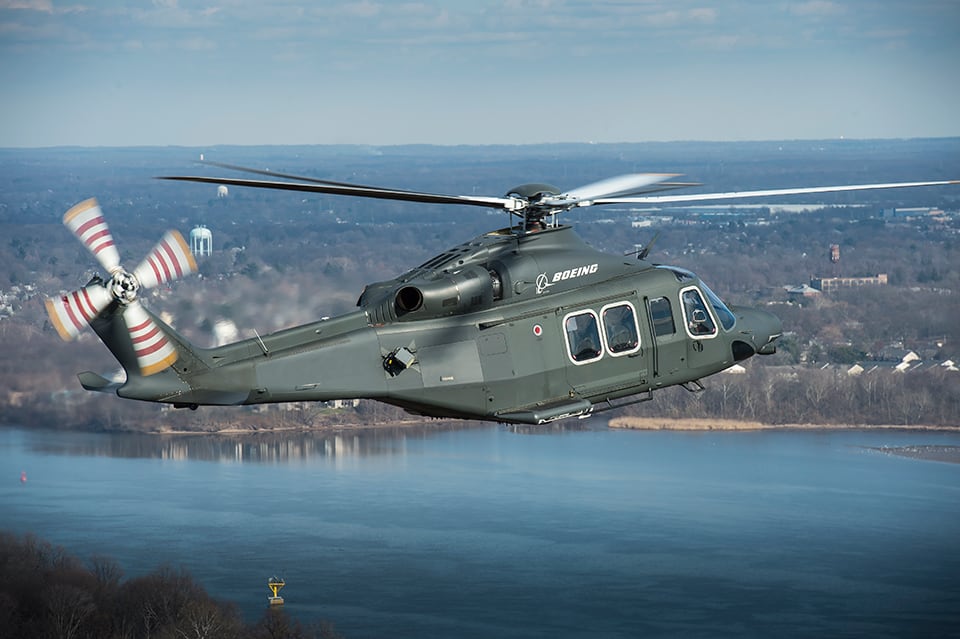ROME — It was 2005 when it looked like Italy’s Leonardo — then known as Finmeccanica — had finally cracked the U.S. market with a prestigious deal to sell its AW101 helicopter to the White House.
Four years later, the so-called VH-71 deal to provide a new helicopter to fly the U.S. president began falling apart amid messy litigation and spiraling costs driven by ever-growing specification demands.
It’s this historical context that makes this week’s deal, primed by Boeing, to sell 84 militarized versions of Leonardo’s flagship AW139 helicopter to the Pentagon for $2.38 billion a sweet, if belated satisfaction for the Italian firm.
Boeing and Leonardo’s MH-139, which will now guard U.S. missile silos, beat the odds by seeing off competition from Lockheed Martin Sikorsky — ironic considering Lockheed Martin and Sikorsky were eventually handed the White House contract.
The MH-139 contract also follows Leonardo’s bitter disappointment when a 2007 deal to sell 78 of its C-27J tactical transport aircraft to the Pentagon unraveled, the victim of a turf war over funding between the U.S. Air Force and the U.S. Army.
Analysts at the time claimed that foreign platforms sold in the U.S. would always be more vulnerable to political rows or funding cuts than homegrown products.
RELATED

This time, however, the stars may have aligned, said Michele Nones, head of the security and defense department at the Rome-based IAI think tank.
“We are not close to U.S. elections, the MH-139 helicopter is exactly what they need and there is no need for major adaptations to the avionics, which drives up costs,” he said. “The program is also not so large that it provokes opposition."
The AW139 is well-known in the U.S., as it’s in use by police forces and customs officers. More than 260 of the 900 AW139s built to date were assembled at Leonardo’s Philadelphia, Pennsylvania, facility, which will now build the MH-139.
The six-ton helicopter, which is popular for oil rig transport, has long driven sales for Leonardo and has been nicknamed the firm’s “crown jewel” by managers.
Originally marketed with U.S. firm Bell, which withdrew from the program, the platform filled a hole in the market between 5,500 kilograms and 8,000 kilograms when design kicked off in 1999.
Richard Aboulafia, an aerospace analyst at the Teal Group said the helicopter’s cost had been a key factor in landing the missile silo patrol contract.
“Thanks to high production rates of the helicopter, it could be priced per scale,” he said. “It also paid for Leonardo to work with a big prime in the U.S., in this case Boeing,” he said.
The Italian firm is now hoping to win the U.S. Air Force’s T-X jet trainer competition. But Aboulafia warned that in trying to sell its M-346 jet trainer to the U.S., Leonardo may be at a disadvantage on pricing.

"Raytheon and General Dynamics walked away from being prime on the aircraft because they couldn’t get the cost, because the production rates of the Italian trainer have not hit a critical mass. Leonardo is building six AW139s a month to one M-346 every other month,” he said.
Leonardo is also at a disadvantage because it used its U.S. subsidiary DRS as prime on the T-X bid, rather than a major American firm, he added.
Winning the T-X competition could make Italy’s new populist government more positive about procuring US kit, said one analyst, who declined to be named.
In June, Italian Defense Minister Elisabetta Trenta told Defense News she did not want to trim Italy’s planned order of 90 F-35 fighter jets, despite her party — the Five Star Movement — previously promising to cut the program altogether.
However, she has since told Italian daily Corriere della Sera that she does foresee a reduction in the order.
“This Leonardo deal in the U.S. might improve the view of the U.S. here, and even affect thinking on the F-35,” said an analyst, speaking on condition of anonymity.
Tom Kington is the Italy correspondent for Defense News.







